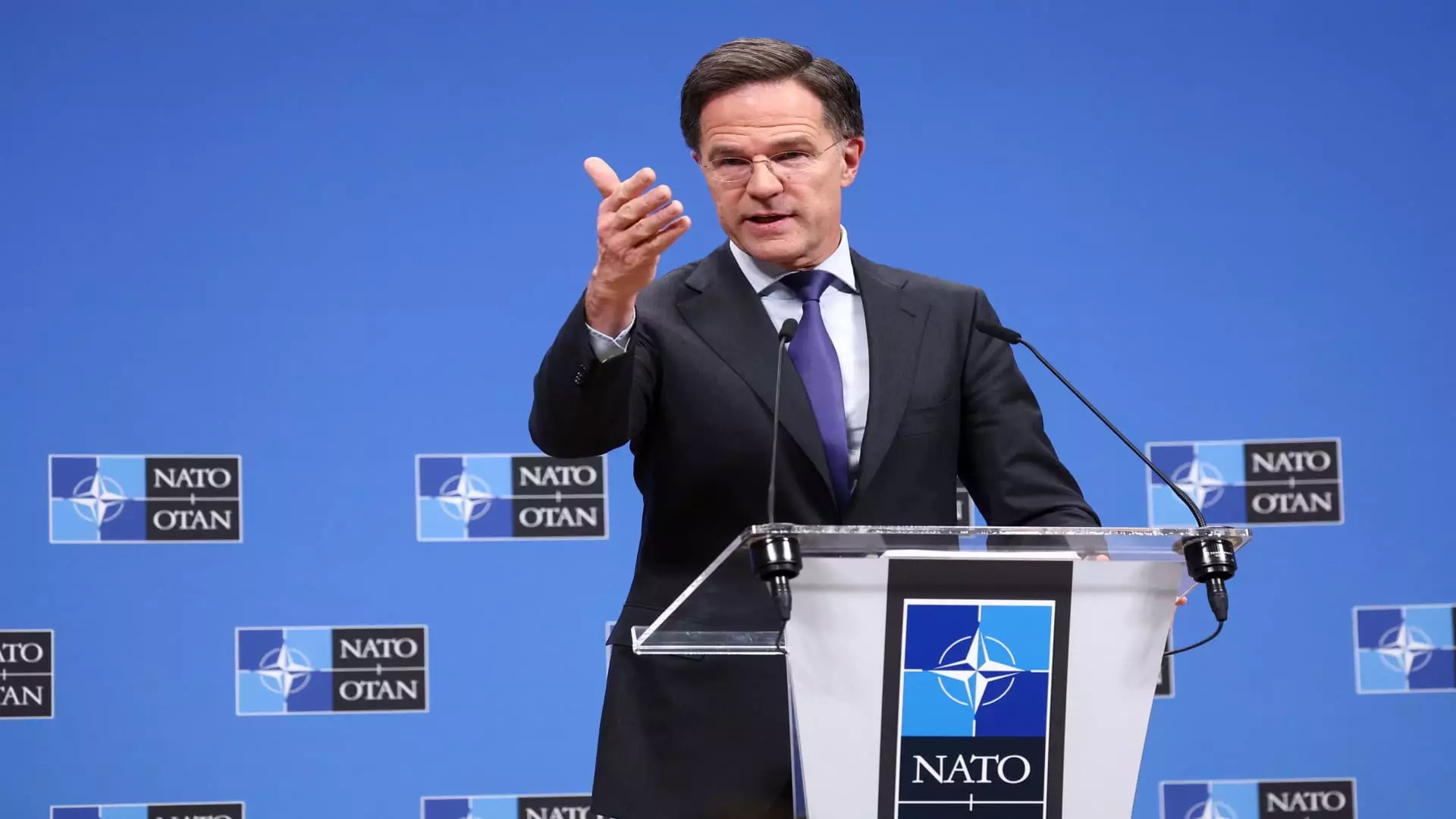The posturing and disagreements within NATO have taken center stage recently, highlighting the critical need for unity and proactive measures among its member states. With shifting dynamics, particularly regarding U.S. foreign policy under the Biden administration, the calls for increased defense spending are growing louder. NATO Secretary General Mark Rutte recently spoke candidly at the Munich Security Conference, urging European allies to move beyond mere complaints and actively engage in finding solutions. This appeal comes at a time when NATO faces unprecedented challenges, necessitating a collective reassessment of defense strategies and financial commitments.
Rutte’s directive to NATO’s European members emphasizes a crucial shift in mindset: rather than voicing grievances regarding U.S. policies or perceived neglect, member states must step forward with tangible solutions. It is not enough to highlight existing problems; NATO members need to articulate specific strategies that can bolster the alliance’s cohesion and effectiveness. This emphasis on constructive debate is particularly pertinent given the geopolitical tensions exacerbated by Russia’s aggression and suggestions from U.S. leadership regarding increased spending targets.
Rutte hinted that NATO could set defense spending goals higher than the existing 2% of GDP requirement implemented in 2014. Speculation arose over a potential figure approaching or exceeding 3%. Such a development would symbolize a significant strategic pivot but would also delineate a clear expectation for all member states to adapt swiftly to these new norms. The urgency of this request reflects a tightening environment where immediate military readiness and resource allocation have become paramount.
The comments from U.S. Senator Lindsey Graham offer insight into how external threats shape internal alliance dynamics. He contended that Russian President Vladimir Putin’s actions in Ukraine have inadvertently unified NATO allies in their resolve to increase defense spending. This sentiment aligns with a broader perspective where threats provoke collective action. Graham’s assertion suggests that rather than viewing military expenditures purely from a financial lens, NATO states must assess them through the prism of strategic necessity and deterrence capability.
Russia’s aggressive posturing has stirred many NATO members to reconsider their military budgets and defense strategies, creating an environment where increased spending is deemed not only beneficial but essential. This re-evaluation is aided by the fact that a growing number of NATO countries are beginning to meet the 2% GDP target, a marked increase from just six members in 2018. The gradual shift indicates a recognition of common threats faced by member states and an understanding that solidarity is critically linked to military preparedness.
The discussion on NATO spending is further complicated by the legacy of the Trump administration, infamous for its contentious relationship with the alliance. Trump’s belligerent calls for higher contributions from NATO members, peaking at suggestions of a 5% target, have left an indelible mark on the discussions surrounding defense spending. His claims that NATO countries have historically relied too heavily on U.S. military support reverberate through contemporary debates.
Such sentiments continue to resonate as NATO grapples with its identity and objectives in light of shifting U.S. strategies. The push for significantly higher spending reflects an existing division among member states, challenging the previously established norms. However, underscoring these calls is the urgent need for NATO to remain credible and effective in the face of evolving threats, which ultimately requires an equitable distribution of military obligations across its membership.
As NATO prepares for its upcoming summit in The Hague, it stands at a critical juncture. The collective resolutions formed during this summit may dictate the alliance’s trajectory for years to come. More than monetary contributions, NATO must foster a culture where strategic planning, shared intelligence, and collaborative exercises are normalized among its members.
Rutte’s appeal and Graham’s rationale jointly underline a transformative moment for NATO. By prioritizing solutions over complaints and embracing defense investments that reflect shared threats, the alliance can effectively enhance its deterrent capabilities. As member states reimagine their defense roles, they must commit to a future defined by collaboration, accountability, and a resolute stance against external aggression. Only through unified action can NATO truly strengthen itself in the face of impending challenges.



Leave a Reply